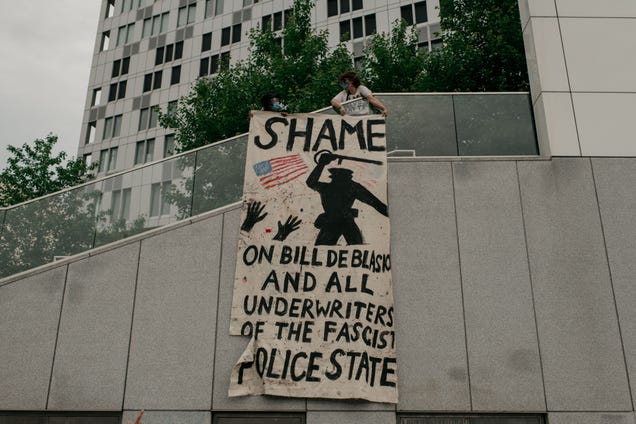
COVID-19 has hammered or imperiled everything from the likes of Wall Street companies to Main Street entrepreneurs in America, wreaking havoc on the nation’s economy. But master real estate investor Joseph Asamoah has defied the pandemic by sticking to a business model that has worked for over 25 years.
His approach includes buying, renovating, and managing single-family houses. Plus he provides homes for low-income families who could not typically live in those places.
Born in Ghana and raised in England, Asamoah came to America over three decades ago with $100 in his pocket and decided to invest in real estate. Converting a hobby into a business, Asamoah has built a real estate investment and management business with a portfolio of 32 single-family homes in the Washington, D.C. area, one of the nation’s most expensive housing markets.
But the journey to success for Asamoah did not come without obstacles. When he bought his first investment property in 1987 in Washington for $47,000, several people warned him he was paying too much. And there were pitfalls. Despite assurances from the seller, Asamoah discovered the tenants had not paid rent for several months. Further, the tenants had accumulated a $5,000 water bill.
“Unraveling this situation was very stressful and something I was completely unprepared for,” he says. “As a real estate investor novice, I was way over my head.”
Asamoah learned from his mistakes and found a niche in the real estate space. Having worked in corporate America, including a stint at IBM, his goal was never to build a multimillion-dollar corporation. Instead his goal was to achieve financial independence by owning appreciating assets that generate passive income. He achieved that in 2003 when income from his rental portfolio equaled his salary at IBM. Since then, his goal has been to implement repeatable and scalable systems, selectively acquire rental properties based on clear criteria, and seek business opportunities as they arise.
His business model includes a very stable income stream that is guaranteed via a contract with what he calls the safest source in the world: the U.S. government. “As long as the tenant (customer) is in the home, then the income stream will continue—guaranteed,” he says. “It really doesn’t matter if the economy is good or bad, the income stream is predictable and reliable. To me, this is what makes my approach time-tested.”
His properties range from $180,000 to $1.5 million in value. On the rental side, monthly rent ranges from $1,400 thru $6,000. Asamoah says most of his real estate acquisitions are held as long-term portfolio properties. Take that first home he bought and still owns today. He says the house is now valued at $750,000 and monthly rent for the property is over $4,700. Asamoah says real estate rental income has consistently increased in value due to rent increases and new property acquisitions. With acquisitions, his company has been able to steadily grow annual revenues at an average 5% to 10% for several years.
He added since most of his tenants are low-income housing choice voucher holders (aka Section 8), most rents are paid by the local housing authority. Asamoah says tenants’ portions typically range from zero to $700 per month. Most of his properties are in “gentrified neighborhoods or in the path of gentrification.”
Asamoah’s firm makes money in many ways, including cash flows from rental properties, revenue from education and coaching services, and net profits when long-term portfolio properties are sold. Known as Dr. Joe (he has a Ph.D. in Information Systems), Asamoah plans to keep growing his company. He recently acquired two more properties in Washington that are now being beautified and transformed with the addition of bedrooms and bathrooms.
As an entrepreneur and investment strategist, Asamoah teaches others how to thrive. And with all the uncertainty the coronavirus crisis has caused, Asahmoah offered five tips to help renters, landlords, real estate investors, or small business owners in the black community survive under current conditions.
He suggests they assess their monthly expenses—take steps to cut unnecessary expenses as fast as you can. Seek options to boost your income, including renting part of your home, exploring alternate income streams. Take steps to build up an emergency fund. Determine how much capital you must have to buy your next property. If you do not have the funds, locate a financial and/or credit partner.

BLACK ENTERPRISE caught up with Asamoah via email to get his expertise on real estate.
You have a business model that has survived four recessions. We understand your business model is something called BRRRR? What does it mean?
Since 1987, I have been through four real estate cycles: early 1990s, mid/late 1990s, 2001-2002, and 2008-2011. It appears we are approaching a 2020 COVID-19 induced recession.
The BRRRR business model comprises the following elements:
Buy – Acquire properties in desirable neighborhoods that are in the path of gentrification
Renovate – Transform “ugly” houses into beautiful homes
Rent – Rent the properties to “Tier 1” low-income families with vouchers that are yearning for an opportunity to live in HGTV-grade quality homes in safe, desirable areas
Refinance – Replace short-term acquisition and renovation funds with permanent financing based on the appreciated value of the home and the monthly cash flow
Repeat – Repeat the process for the next property
The BRRRR strategy allows me to acquire and renovate properties in gentrifying areas with bank financing, force appreciation via targeted improvements, and then replace short-term financing with permanent financing based on the higher appraised values. Through BRRRR, I’m able to replace most of my initial funds via refinancing so money is recycled for new acquisitions.
How have you been able to achieve such housing diversity with low-income black families living in the same areas as high-income white families?
My screening process is extremely thorough and involves several steps including visiting prospective tenant’s homes. Screening is based on the premise that it’s easy to get someone into your home and very difficult to get them out once they are there.
I don’t invest in low-income areas. All my houses are in desirable areas. At the core, my voucher tenants are no different than you and I. They don’t want to live in bad areas, or in “crappy” houses or rent from slumlords. They are yearning for a nice house in a nice neighborhood and to rent from a quality landlord. I call these tenants “Tier 1” voucher holders.
If you treat your Tier 1 voucher holders well, I’ve found that they take care of the house, pay their rents, are pleasant to deal with, and they stay a very long time. My longest tenant has been renting from me for over 23 years. I regularly have 10-15 year tenants. Since good tenants stay a long time, they allow me to grow my portfolio with minimal stress and hassle. My tenants are the reason why I’ve been able to achieve financial independence and build real wealth. Without them, none of this could have been possible.
If I am a real estate investor, what strategy or approach can I apply to survive in today’s market amid COVID-19?
In a downturn, your ability to survive as a real estate investor will be closely linked to your ability to access financing (bank financing, lenders, and private investors). In a downturn, financing becomes harder, however, if you are “bankable” then there will be some excellent buying opportunities. With this in mind, some of my suggestions to help increase your chances of accessing real estate financing include:
- Get your financial house in order.
- Check and build your credit score – get credit repair if necessary.
- Build cash reserves, gather and organize your financial documents – now!
How can a real estate investor turn real estate equity into cash flow? And why would that be a good strategy to apply now if I want to finance a real estate project or development?
Many homeowners and long-term investors are equity rich and cash poor. Although equity looks good on a financial statement, it is sometimes appropriate to tap into this “dead equity” and reinvest the funds to take advantage of buying opportunities and transform dead equity to cash flow streams. For example, an investor can leverage the home’s equity. Obtain a business line of credit or home equity line of credit or simply refinance an existing mortgage. Conduct due diligence and locate properties that may be purchased at discounted prices that once rented would generate positive monthly cash flows. Purchase a rental property or investment-grade assets at discounted prices. Make the property rent-ready by completing minor or mid-level upgrades. As mentioned previously, in a downturn, access to financing is extremely important. By tapping into “dead equity,” a ready stream of low-interest funds can be accessed quickly to finance real estate and development projects.
You have coached 150 experienced and novice investors in your rare investment strategy. What programs have you developed that could help others achieve financial independence?
The Joint Venture (JV) Program is my premier program and the primary forum where I engage with beginner and intermediate-level real estate investors. In my humble opinion, the best way to learn real estate investing is to do a deal, period—not going to seminars, boot camps, reading books, or listening to MP3 files. There is no better learning experience than doing a deal. None. Short of this option, the next best thing is to “look over the shoulders” of a successful real estate investor as they execute a transaction from start to finish. We meet at least twice per month virtually from day one thru tenant move-in and refinance (typically 6-8 months).
I host free weekly “Wealth Wednesday” Facebook and Instagram Livestreams (@drjoeasamoah). I also host “Get Real with Dr. Joe” Facebook, Instagram, and YouTube livestreams every other Friday on the “Bigger Pockets” platform. Bigger Pockets is the world’s largest online platform serving the real estate community (@biggerpockets). I am a frequent contributor to Bigger Pockets. I’ve published a number of articles.
Why is real estate still a good business for blacks to pursue to build financial wealth for themselves and their families?
Real estate, especially in many U.S. markets, has proven to be a time-tested vehicle for creating wealth and generational legacies. Compared with other racial groups, black Americans experience a distinct wealth gap that appears to be growing. Correctly executed, real estate investing offers many advantages, especially when compared with other asset classes. Real estate can build financial wealth and create legacies. Additionally, real estate offers several other benefits that include cash flow, tax benefits, equity build-up, appreciation, and the ability to leverage.
What advice would you offer to black real estate investors before starting up or expanding into the business?
Despite what late-night infomercial gurus tell you, successful real estate investing requires hard work, patience, and a business system. To realize financial independence through real estate, it is important you treat your real estate activities as a business more so than a hobby. Work on yourself first and set goals. Allocate time for education and training. Understand your strengths and weaknesses. Discuss with spouse and family and get their buy-in and support (if possible). Decide on your method of focus based on your financial situation, risk tolerance, time availability, etc. Identify and work with a local mentor. Locate a mentor that is knowledgeable in your area of focus, able and willing to provide guidance, and has a proven track record of success and real-world experience. Proceed immediately to your first deal and do what it takes to get that first deal under your belt. Don’t wait for the perfect time. There is never a perfect time to start. You just have to start.
from Black Enterprise https://ift.tt/2UnM0mF

 A K-pop fan holds a photo of a member of BTS at Rockefeller Plaza on February 21, 2020. | Dia Dipasupil/Getty Images
A K-pop fan holds a photo of a member of BTS at Rockefeller Plaza on February 21, 2020. | Dia Dipasupil/Getty Images
/cdn.vox-cdn.com/uploads/chorus_asset/file/20019529/Screen_Shot_2020_06_04_at_3.43.58_PM.png)
/cdn.vox-cdn.com/uploads/chorus_asset/file/20019068/Screen_Shot_2020_06_04_at_11.56.18_AM.png)




